|
|
Post by jager on Apr 29, 2023 1:23:29 GMT -5
I was able to grab the coupe when it was released (15 years ago?), and while I like the story, I wonder why they made the glasshouse disproportionately large. I feel it would have looked even better if the roof was lowered by a few inches.
You did well to find this one - they aren't easy to come by now.
|
|
oldirish33
Member
"All Jaguars run on Guinness!"
Posts: 3,333
|
Post by oldirish33 on May 7, 2023 13:17:40 GMT -5
While both are very interesting, it's the open car that attracts me. Right in my favourite LM era. The Nash Healey coupe that was run in 1951 was the only coupe they built for Le Mans, the rest being open cars. Although the coupe was to run again in 1952 before being crashed heavily on the Mille Miglia before Le Mans. As I indicated, it was hastily given a open body for the run at Le Mans in 1952. Fasinating story Jerry and one that I'm sure was the way things were done in many a motorsport team not long after the end of WII. The emphasis very much on taking part then making it look purposeful. Pioneering days. Interesting cars, models and story!  Like that a lot and one i wasn't particulalry aware of They accomplished a great deal considering that they had very tight budgets and were competing against more well to do entrants and larger factories. Nash didn't really kick in any serious money for race car development until they placed 3rd in 1952. I just wish that when I had the opportunity, I would have asked Geoff and Donald more questions about this period, there would have been many more fascinating stories I'm sure.  Thanks! I was able to grab the coupe when it was released (15 years ago?), and while I like the story, I wonder why they made the glasshouse disproportionately large. I feel it would have looked even better if the roof was lowered by a few inches. You did well to find this one - they aren't easy to come by now. Not sure why I never grabbed one when new. I am glad I found one at a reasonable price for my project. I don't disagree with you on the height, but I also think that Bizarre modelled the car on the current reconstruction, not the original. When you look at both, the rebodied car seems to have a taller greenhouse and may have had something to do with the Nash windscreen they used. The original body was designed by Jerry Coker who later designed the Austin Healey 100 and original Sprite. He worked with Armstrong Whitworth Aircraft on the design. Its lighter weight than the open car the year before and shape allowed it to do 130 mph on the Mulsanne Straight, which compare favorably with Jaguar at 140 and Cunningham at 152 that year. I think they could have done better by not using the chassis from the prior year to produce a lower car overall, but there was no money for that. |
|
oldirish33
Member
"All Jaguars run on Guinness!"
Posts: 3,333
|
Post by oldirish33 on May 8, 2023 12:25:10 GMT -5
Better Late Than... Despite having announced this model many, many years ago and having already produced the cars that immediately succeeded it, Spark has finally released the Aston Martin DP212 which ran at Le Mans in 1962. As long as the wait seemed, glad it is finally over and that portion of the collection completed. Given the result, the wait was probably worth it. Stewart recently showed the other Aston pictured here, but couldn't resist showing it again. Its the car future World Champion Jim Clark drove at Le Mans in 1961, his third consecutive drive for the small Border Reivers team. Aston Martin DP212 - Le Mans, 1962 - Spark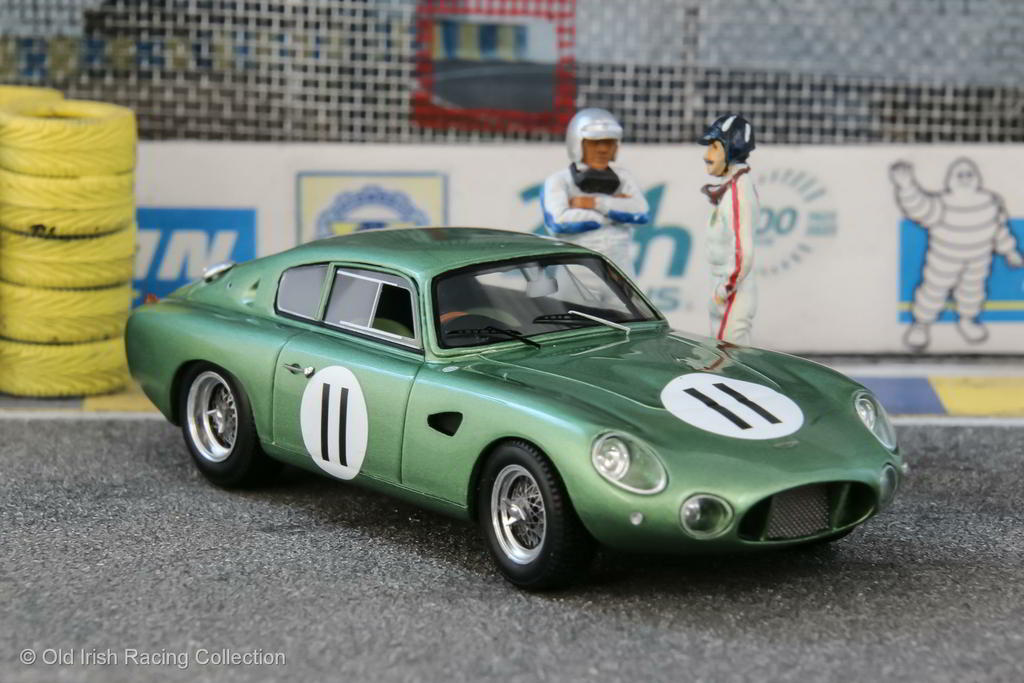 As the CEO of Aston Martin, John Wyer approved a new racing project tied directly to road car development. The result was the DP212, which gave Aston Martin a genuine GT prototype which was substantially based on a modified DB4GT. Using the Aston 4.0L six-cylinder engine, the DP212 produced 345 bhp. However, the car was too heavy and in race trim, the engine only produced 327 bhp, giving a top-speed at Le Mans of 168 mph. For Le Mans in 1962, Aston Martin brought Graham Hill and Ritchie Ginther together to pilot the new car. 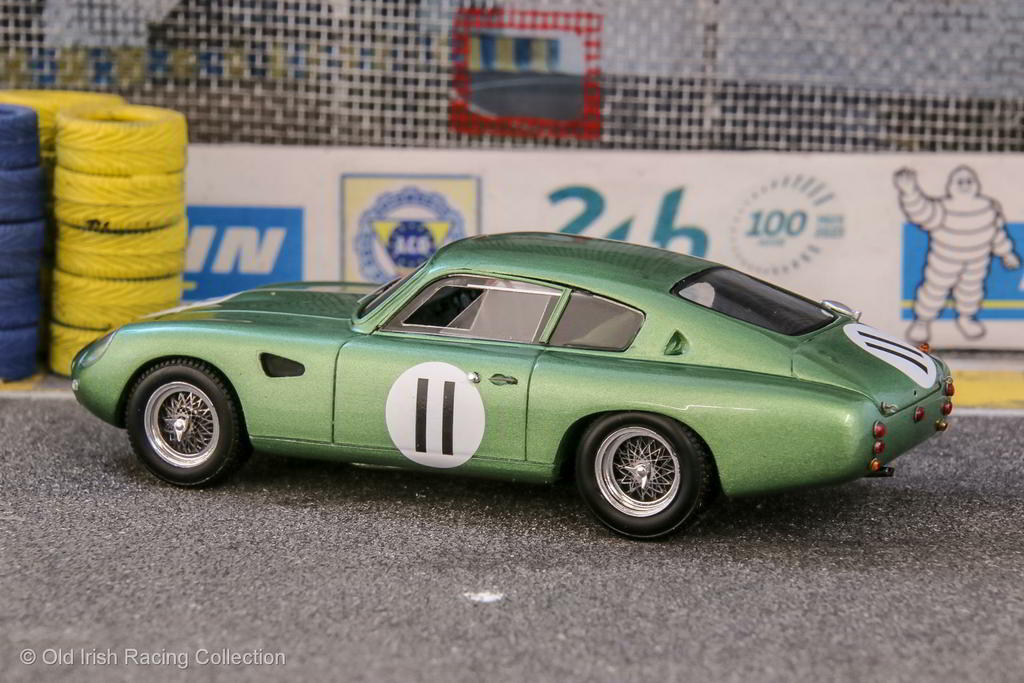 Together with its weight, it was discovered that the car had rear end lift at speed. Both were a result of inadequate testing, as well as the cause of its retirement. Still, Hill took the lead of the race on the first lap and was in 2nd after the first hour. In the 4th hour while in 4th place behind the Ferrari prototypes, they had to pit to replace the dynamo, which cost them five laps. Two hours later they retired with a broken oil line, their race over. Aston sold the car on to Viscount Downe and it was raced from 1964-81, primarily by Mike Salmon, with much success in national GT class races. The car with the DP214 & DP 215 from Le Mans in 1963  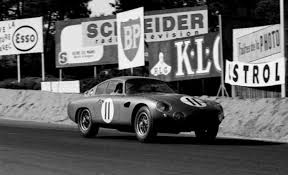 Aston Martin DBR1/300 - Le Mans, 1961 - Spark Aston Martin DBR1/300 - Le Mans, 1961 - Spark
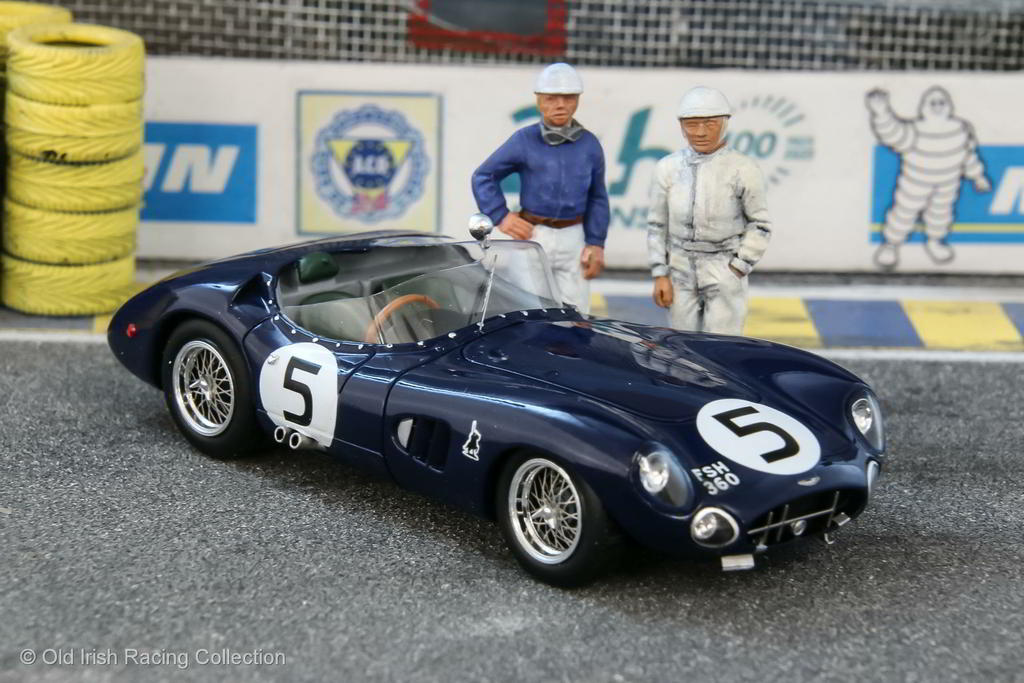 At the end of 1959, Aston Martin withdrew from the World Sports Car Championship and sold off their Championship cars. The Scottish team Border Reivers founded by Jock McBain purchased this ex-works Aston Martin DBR1/300 and enlisted Jim Clark and Ron Flockhart to drive for the team. Flockhart had already won Le Mans twice driving for rival team Ecurie Ecosse and Clark was still a promising driver a couple years away from F1 prominence. 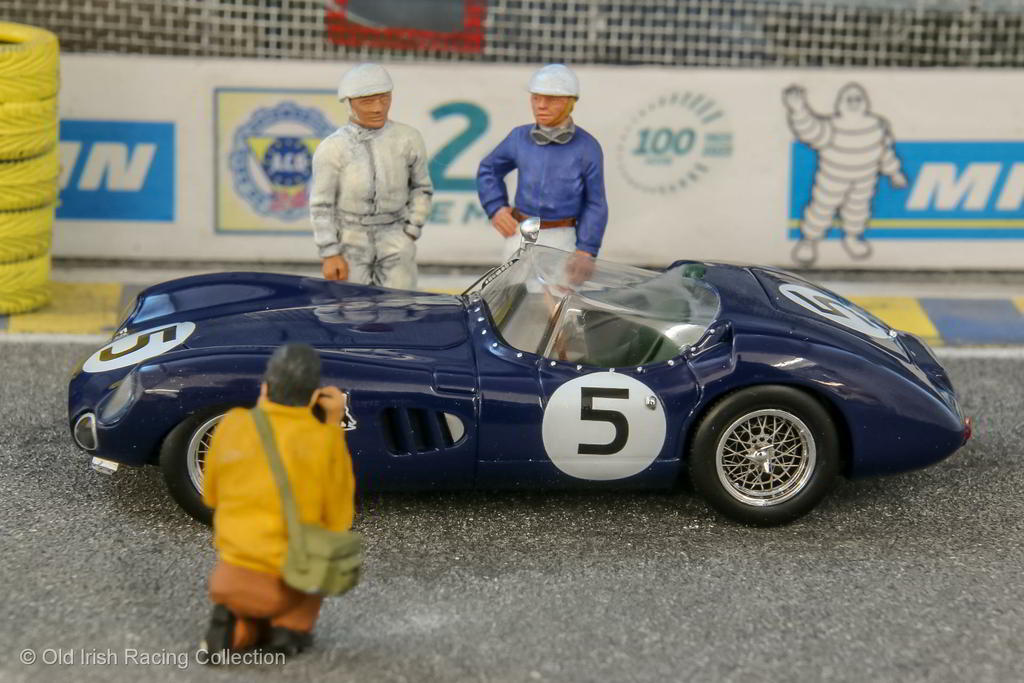 Clark had driven the car (Ch. # DBR1/3) the year prior with Roy Salvadori to 3rd place and the team had high hopes the aging Aston would do well again in 1961. With full Aston Martin factory support, they qualified 8th fastest and were doing well until 2 am, when the clutch failed putting them out of the race. It was the last major race for the car which started life in 1958 and had been driven competitively by the likes of Stirling Moss, Tony Brooks, Jack Brabham, Roy Salvadori, as well as Clark and Flockhart. 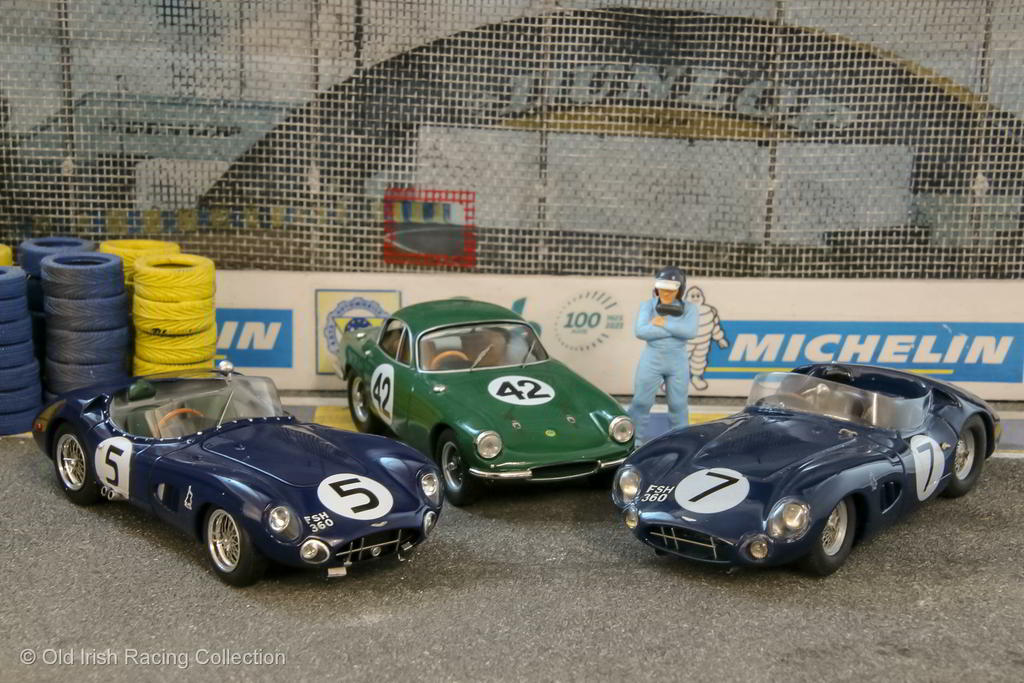 Jim Clark drove for Border Reivers at Le Mans in 1959, 1960 & 1961. In 1959, he drove the Lotus Elite with John Whitmore to 10th place overall and 2nd in class. In 1960, driving the Aston Martin with Roy Salvadori, the pair finished 3rd overall. Not a bad showing for the young Scot. From 1962 onward, Clark would focus on his World Championship career with Lotus and did not drive at Le Mans again. 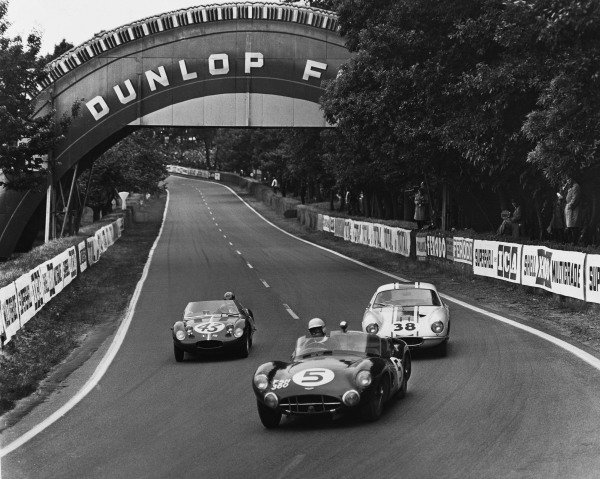
|
|
|
|
Post by Tom on May 8, 2023 13:05:04 GMT -5
Fantastic models of beautiful cars. No sure I can resist the DP212 myself...
|
|
|
|
Post by reeft1 on May 8, 2023 15:08:37 GMT -5
That is an absolute beauty x 2
|
|
|
|
Post by gauchoman on May 8, 2023 20:15:37 GMT -5
Aston Martin DP212 - Le Mans, 1962 - Spark Great, I love to discover fine details, that make difference between a low cost and a premium model. The metal spokes of the wheels, the metal rings surrounding the lights transparent cover. The radiator. The rear lights are incredible! Aston Martin DBR1/300 - Le Mans, 1961 - Spark Similar wheels, similar metal rings for lights, windscreen wiper are delicious, and exhaust pipes are terrible. Loved the mirrow mounted on the windscreen. Gaucho Man |
|
|
|
Post by DeadCanDanceR on May 8, 2023 21:33:03 GMT -5
I would love to have those in my collection, in spite of their numbers! 😬
Great additions!
|
|
|
|
Post by jager on May 8, 2023 23:18:07 GMT -5
Great to see the DP212 has finally made it into production. The colour looks a little greener than the later cars Jerry, is this correct?
|
|
|
|
Post by Alfaholic on May 10, 2023 2:47:38 GMT -5
The only negative I can see in the DP 212 is that they didn't paint it red  |
|
|
|
Post by Scalainjridesagain on May 10, 2023 3:49:13 GMT -5
Both look wonderful. Most looking forward to the DP212 arriving here
|
|
|
|
Post by JSB33 on May 14, 2023 7:02:13 GMT -5
Such beautiful sets, hard to find a better looking car than the DBR1
|
|
oldirish33
Member
"All Jaguars run on Guinness!"
Posts: 3,333
|
Post by oldirish33 on May 14, 2023 18:38:53 GMT -5
Fantastic models of beautiful cars. No sure I can resist the DP212 That is an absolute beauty x 2 I agree they are beautiful cars. Stylistically some of the best looking Astons in my opinion. Aston Martin DP212 - Le Mans, 1962 - Spark Great, I love to discover fine details, that make difference between a low cost and a premium model. The metal spokes of the wheels, the metal rings surrounding the lights transparent cover. The radiator. The rear lights are incredible! Aston Martin DBR1/300 - Le Mans, 1961 - Spark Similar wheels, similar metal rings for lights, windscreen wiper are delicious, and exhaust pipes are terrible. Loved the mirrow mounted on the windscreen. Gaucho Man I tried to find an image of the exhausts on the actual DBR1. The only image I could find was from above. From that image, they look to be correct. The exhaust pipes on the 1960 version of the car were more pronounced and modified for 1961. The Fine details are very nice. I would love to have those in my collection, in spite of their numbers! 😬 Great additions! Numbered cars can be beautiful. 😄 Great to see the DP212 has finally made it into production. The colour looks a little greener than the later cars Jerry, is this correct? It does look a shade or two different. I looked at a number of period images and it's very difficult to tell if it's correct or not. The obvious reasons/difficulty of using old images for comparison, I would say if not the same, close. Aston green is distinctive, but I think highly inconsistent in real life let alone on models. The only negative I can see in the DP 212 is that they didn't paint it red  I'd be happy to paint one red for you Martin. With a brush okay? 😁 Both look wonderful. Most looking forward to the DP212 arriving here Hope you get yours soon Andy, it's a great model! Such beautiful sets, hard to find a better looking car than the DBR1 It's profile says racing sports car. |
|
|
|
Post by gauchoman on May 14, 2023 19:29:51 GMT -5
Great, I love to discover fine details, that make difference between a low cost and a premium model. The metal spokes of the wheels, the metal rings surrounding the lights transparent cover. The radiator. The rear lights are incredible! Similar wheels, similar metal rings for lights, windscreen wiper are delicious, and exhaust pipes are terrible. Loved the mirrow mounted on the windscreen. Gaucho Man I tried to find an image of the exhausts on the actual DBR1. The only image I could find was from above. From that image, they look to be correct. The exhaust pipes on the 1960 version of the car were more pronounced and modified for 1961. The Fine details are very nice. Ops! sorry for not making myself clear. I meant "terrible good!" not "terrible bad" My english is not perfect  |
|
oldirish33
Member
"All Jaguars run on Guinness!"
Posts: 3,333
|
Post by oldirish33 on May 14, 2023 21:38:58 GMT -5
No worries. Your English is much, much better than my Spanish. 😀
|
|
oldirish33
Member
"All Jaguars run on Guinness!"
Posts: 3,333
|
Post by oldirish33 on May 16, 2023 13:46:37 GMT -5
What is a Profilée? - I have been looking for an Bugatti Type 50 for my collection of classic Bugatti's for some time. Every once in a while, continued trolling of the auction listings is rewarded when a very nice model turns up that goes unnoticed. The result is scoring a very nice model for fewer coins.  This is one such score. 1930 Bugatti Type 50 T Semi-Profilée - Look Smart The Type 50 Bugatti is by many, considered the finest motorcar made by the firm from Molsheim. The French firm brought sportiness to their already luxurious Type 46 on which the Type 50 was based. The Type 50 also featured the most powerful engine produced by Bugatti. A total of sixty-five Type 50s were built between 1930 and 1934 in Profilée (coupe) and semi-Profilée (touring) coachwork. The total production number included two Type 50 Le Mans race cars.  The Type 50 coachwork was done by different coach firms to the design of Jean Bugatti. This car in its semi-Profilee coachwork gives it the designation Type 50 T. All Type 50s were powered by a 5.0L Roots type supercharged straight eight-cylinder engine. The engine was inspired by the Miller Indy type engine. The Type 50 T engine produced 200 BHP, 25 less than the coupe, but had more torque. It was capable of a top speed of 120 mph (192 kph). Heady stuff for 1930!  Profilée is the French word for profile and given to the Bugatti Type 50 because of its dramatic profile.. The coupe versions of the Type 50 with their fastback styling were called Profilée, while the touring version with its notchback rear were called Semi-Profilée. So now you know.  
|
|